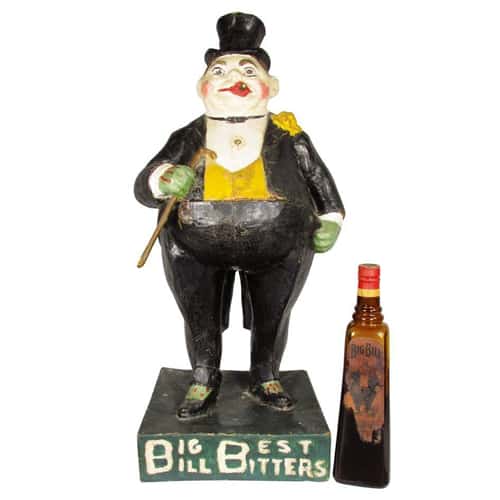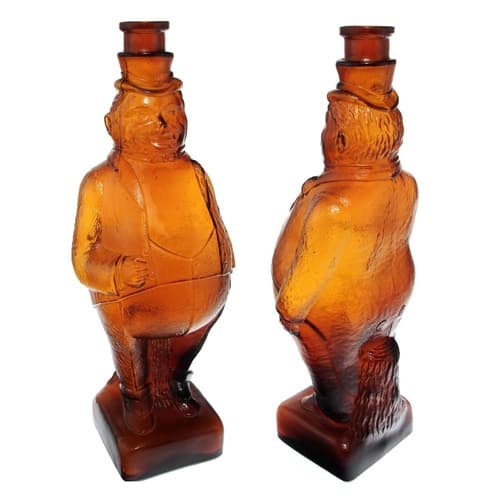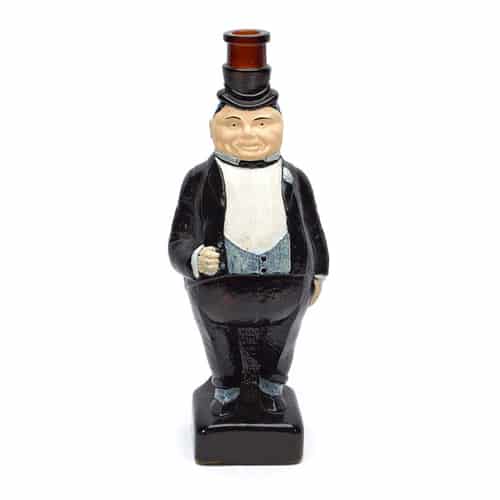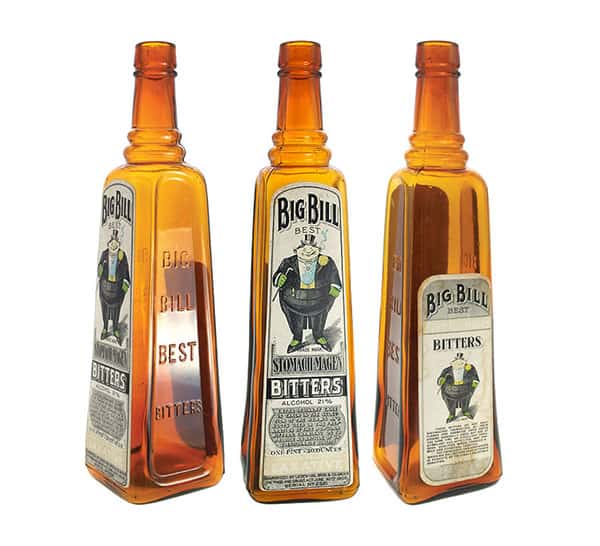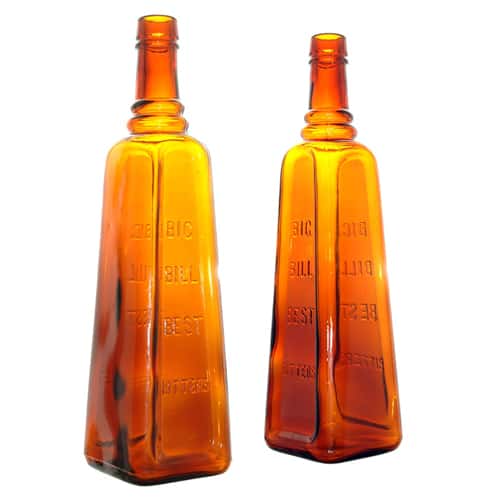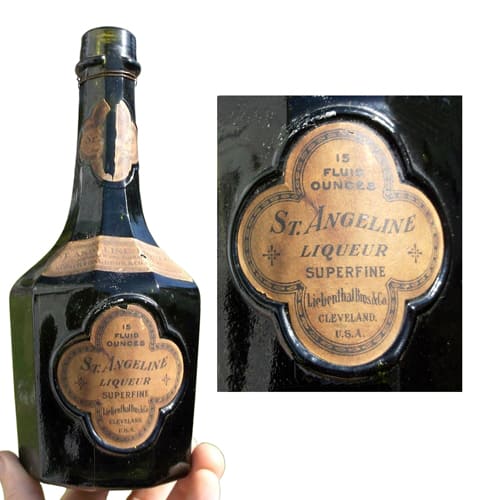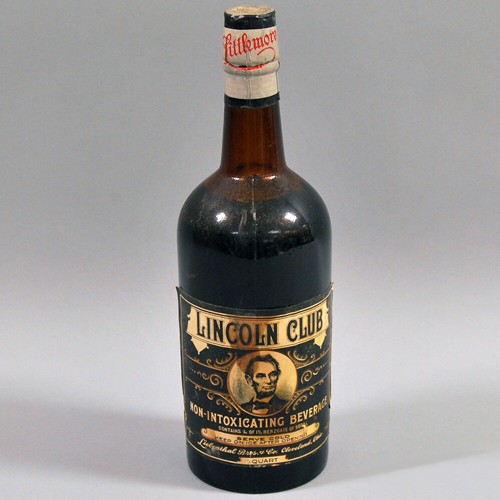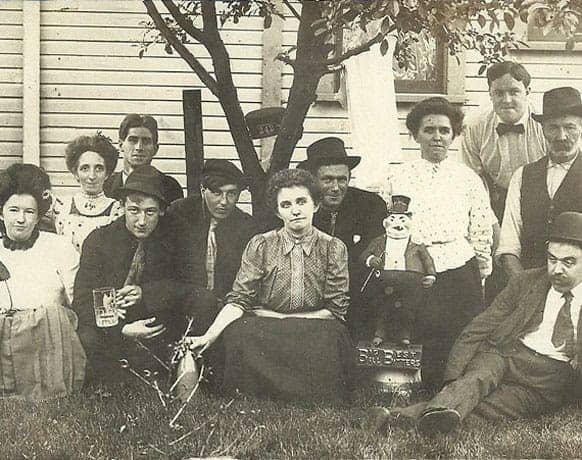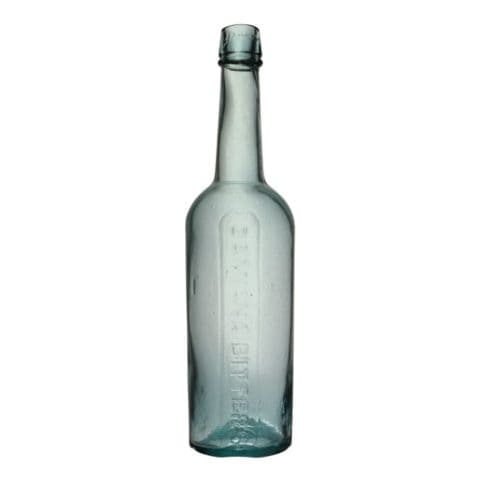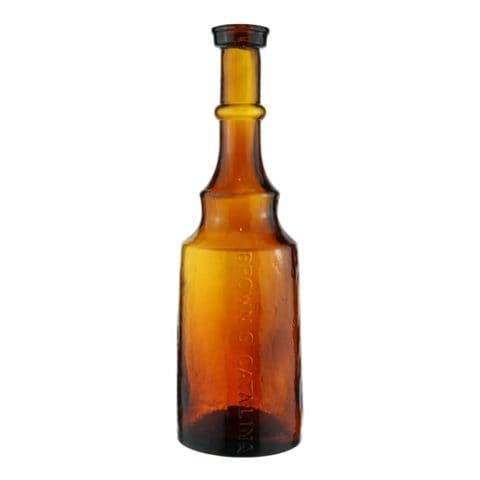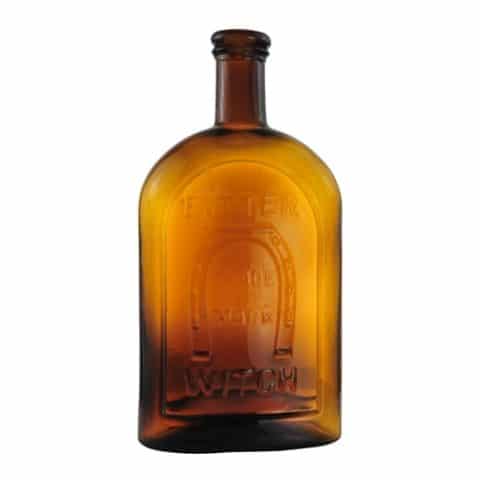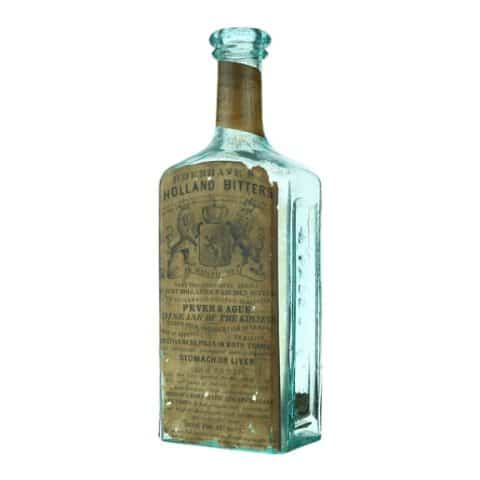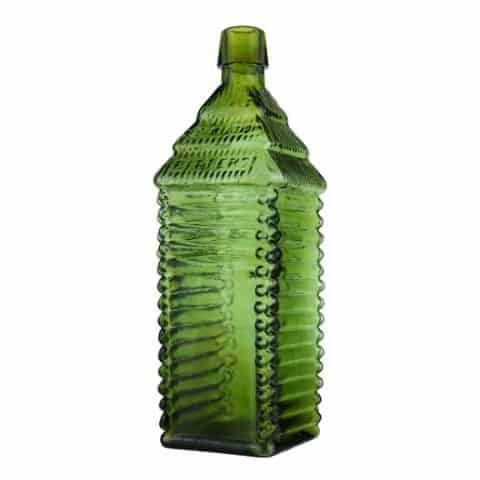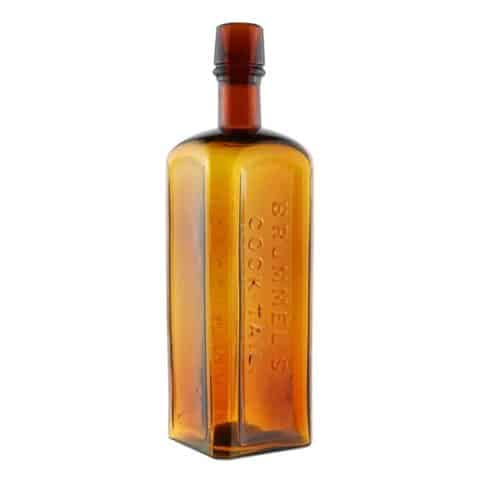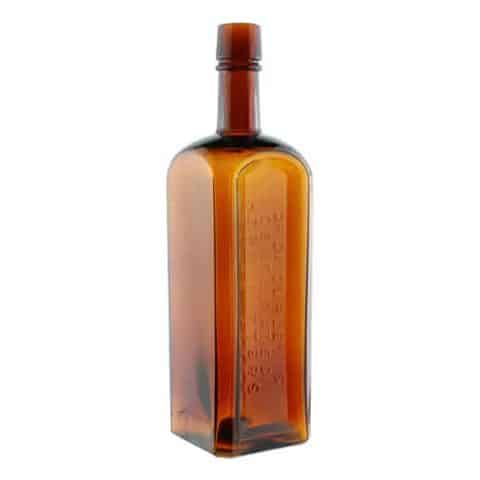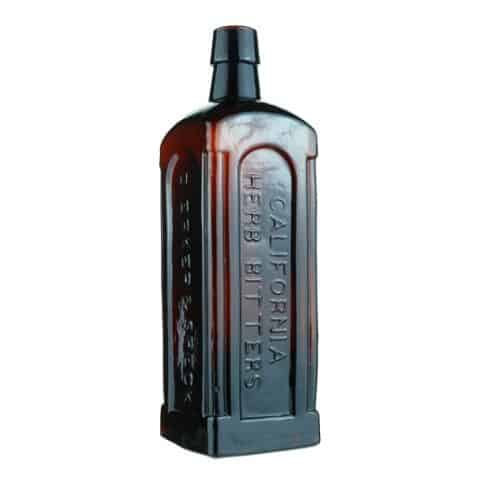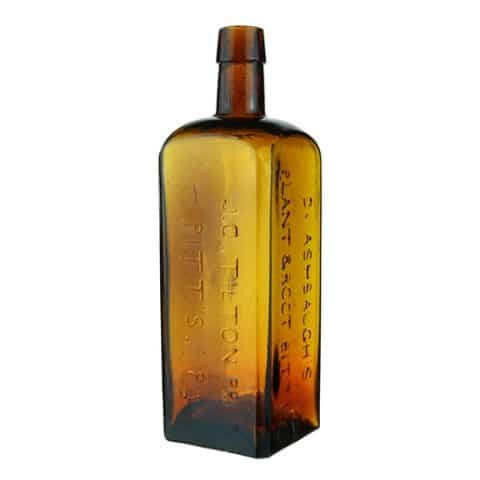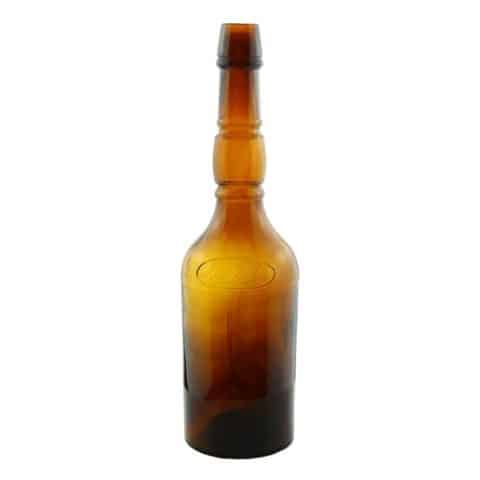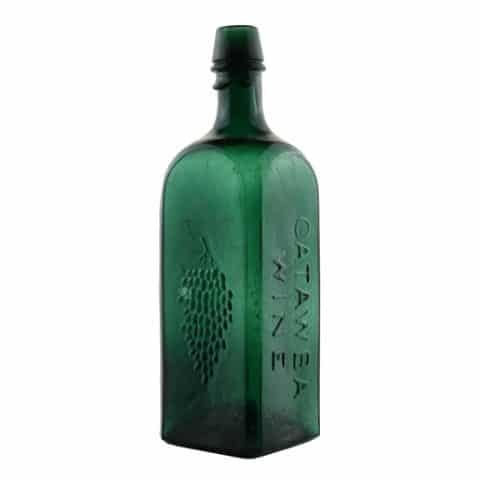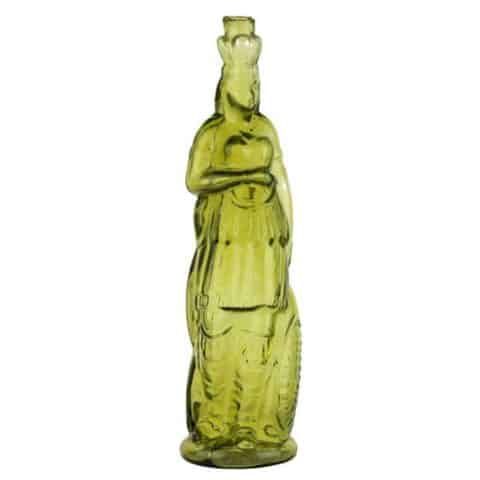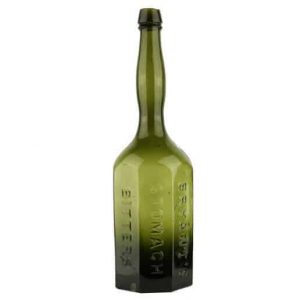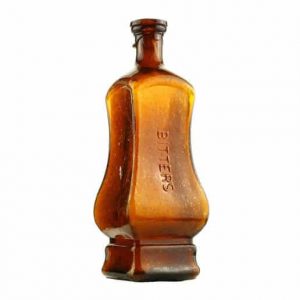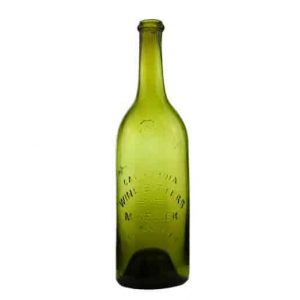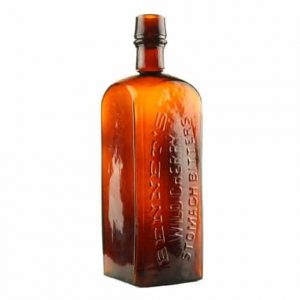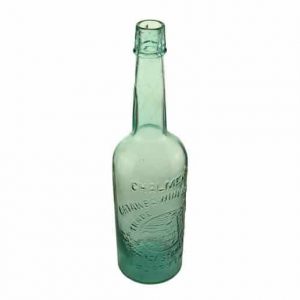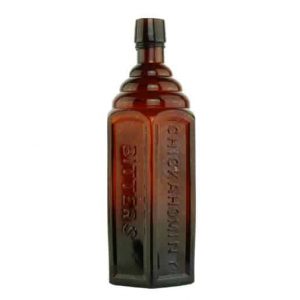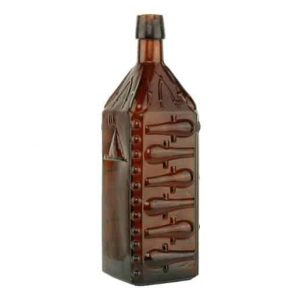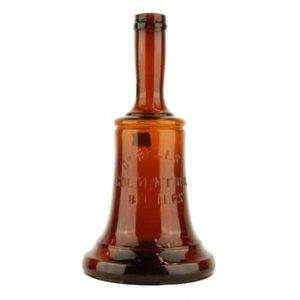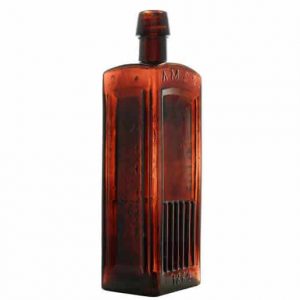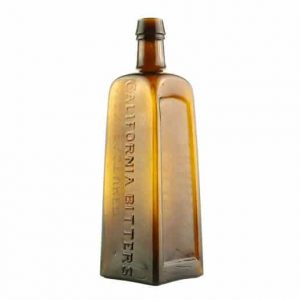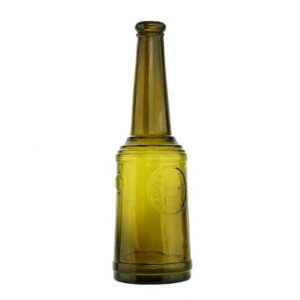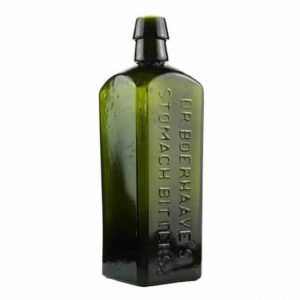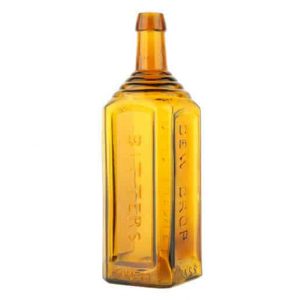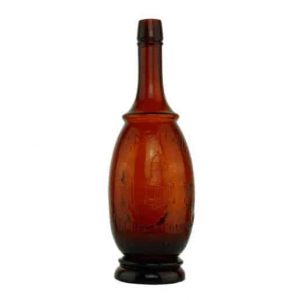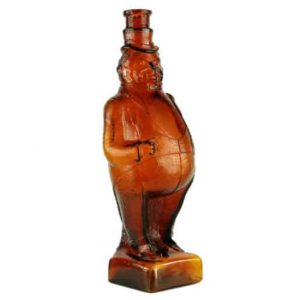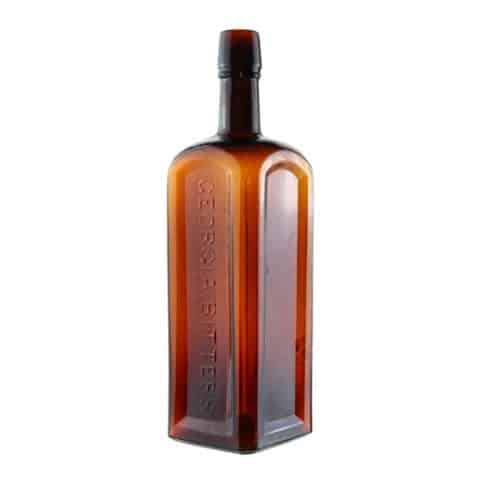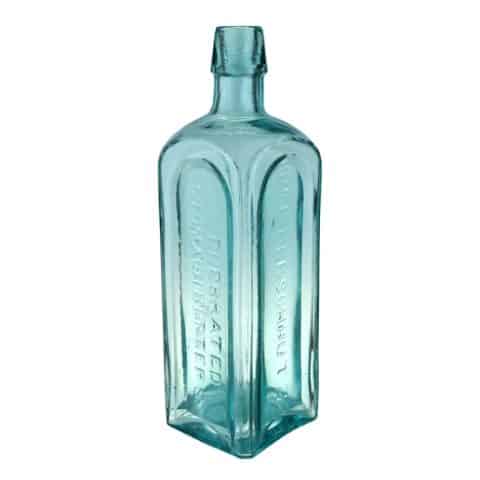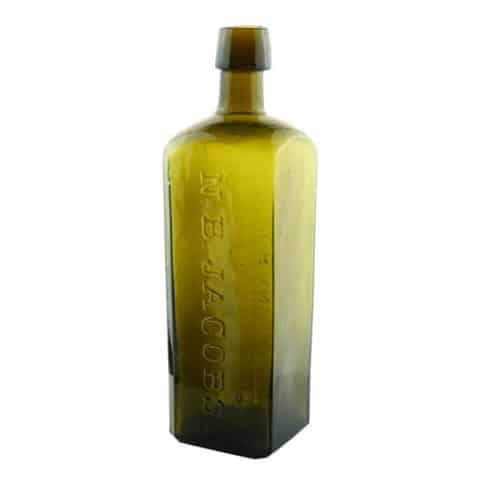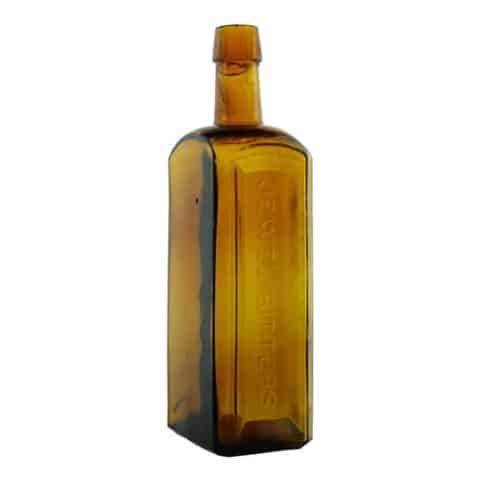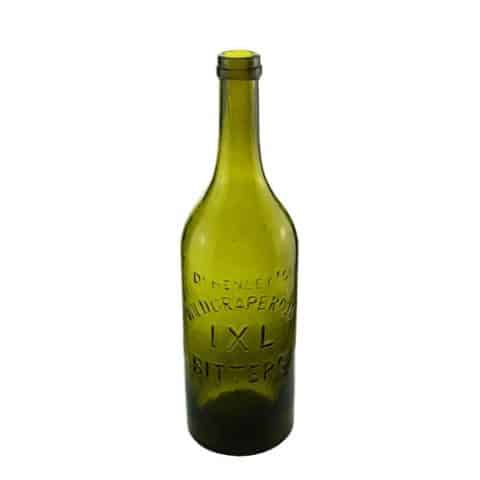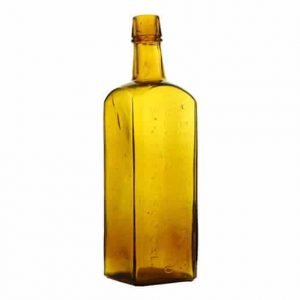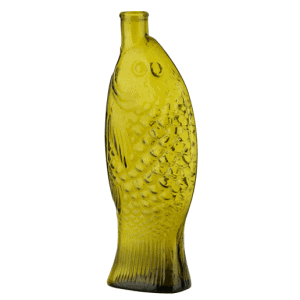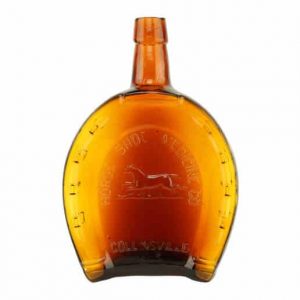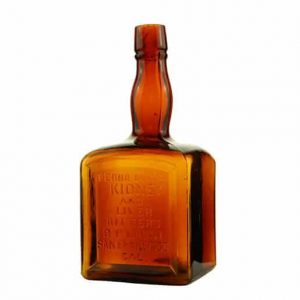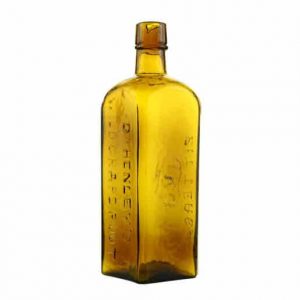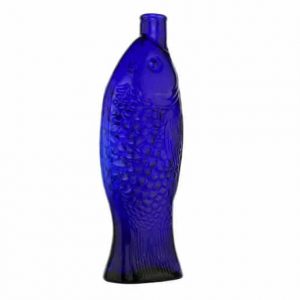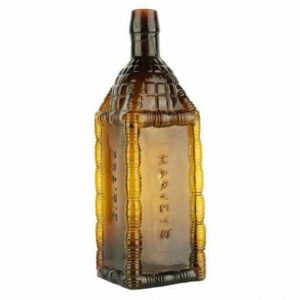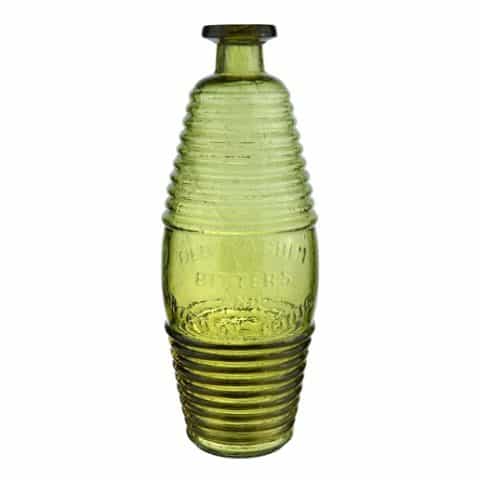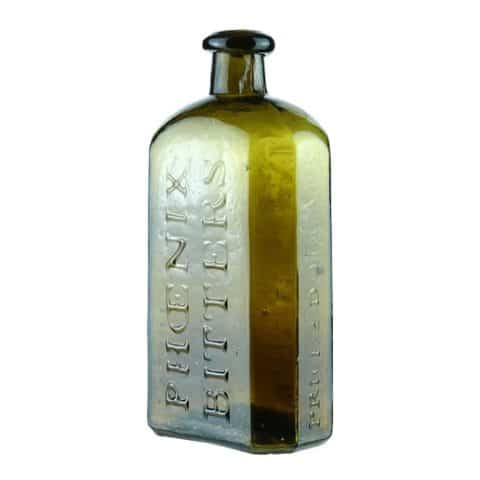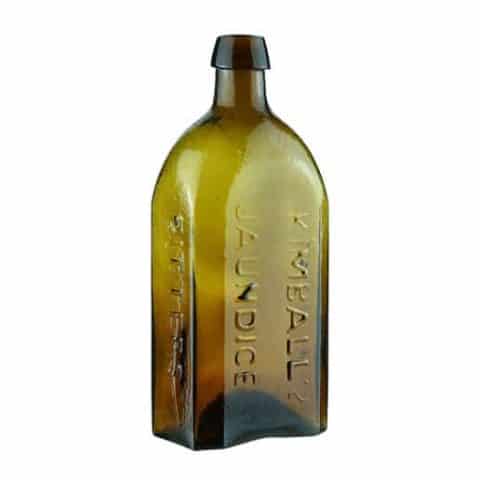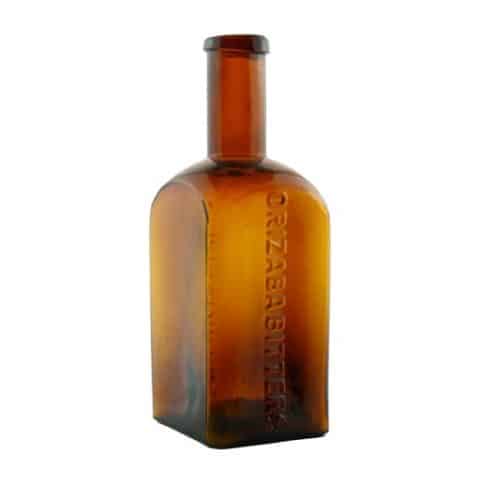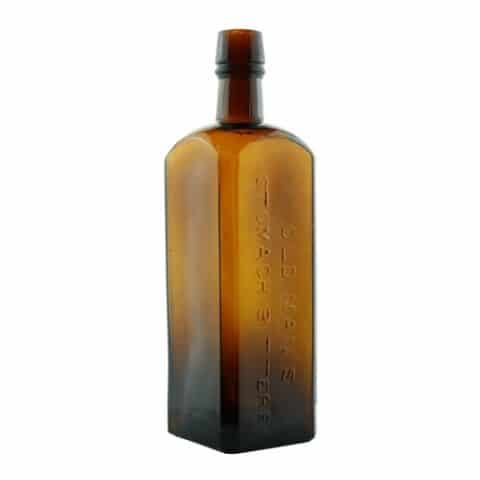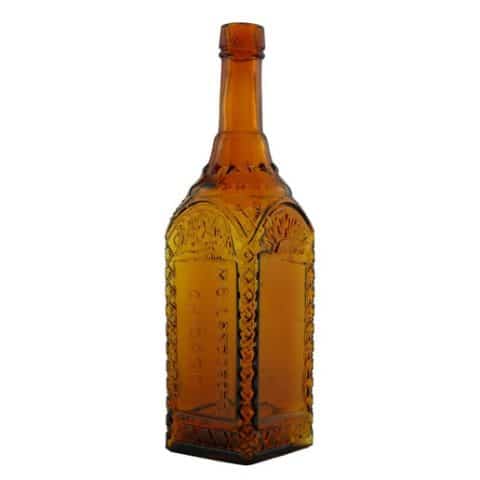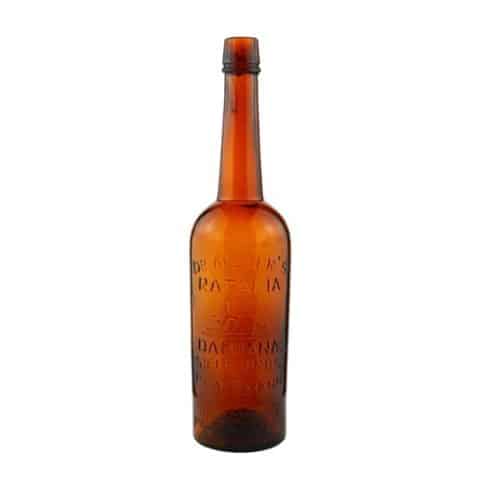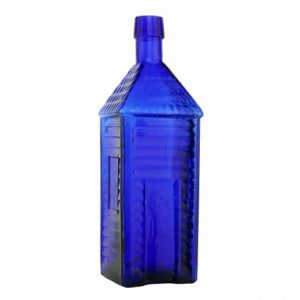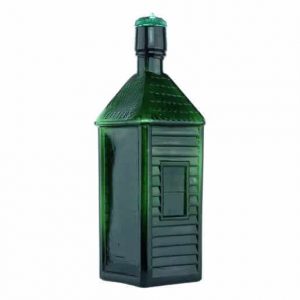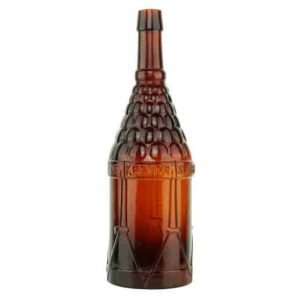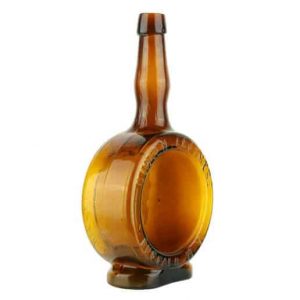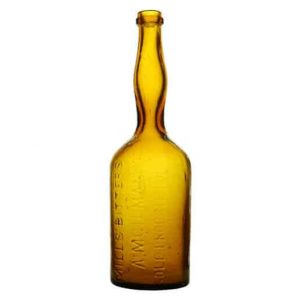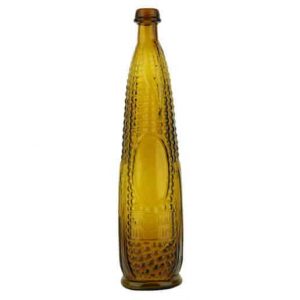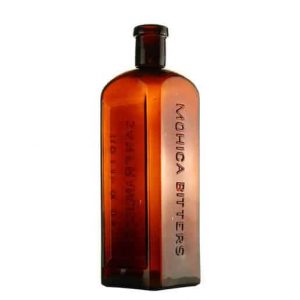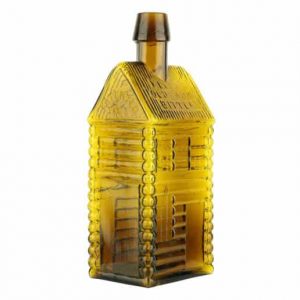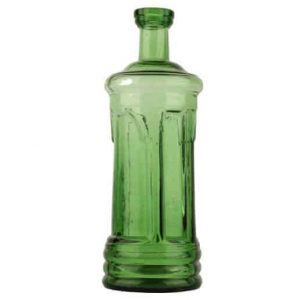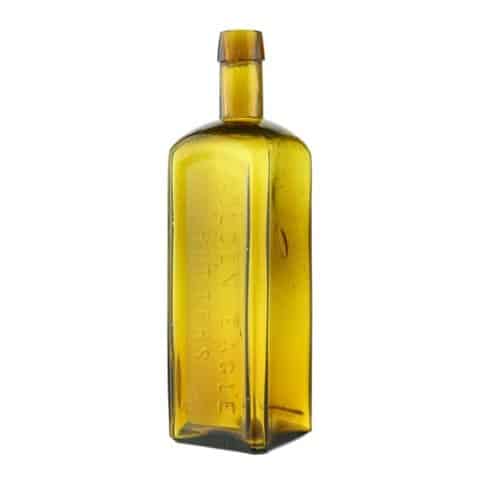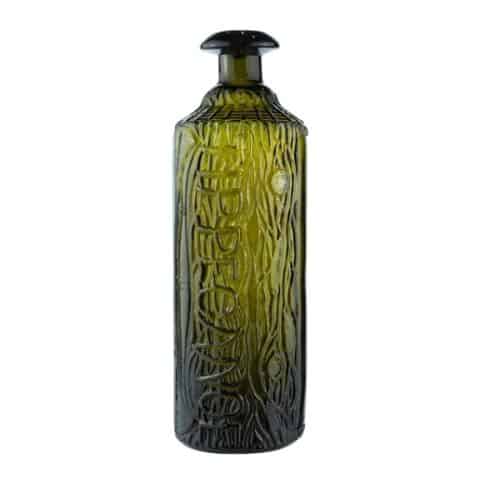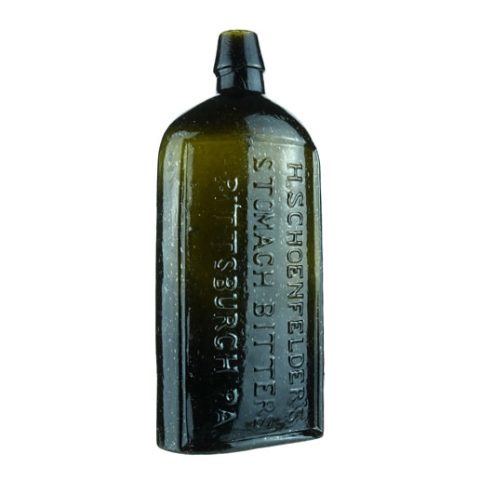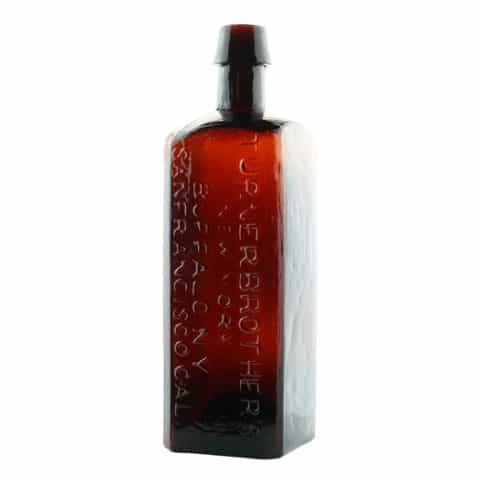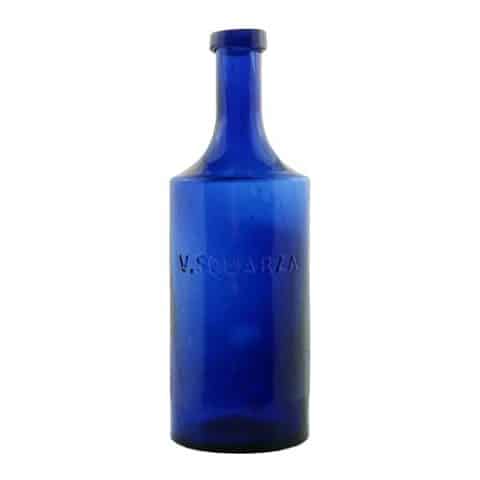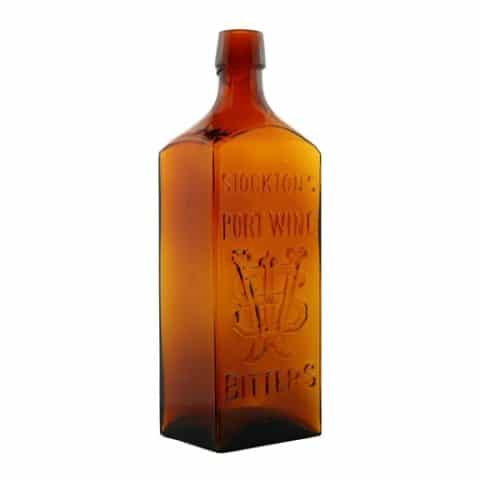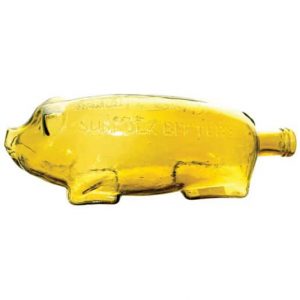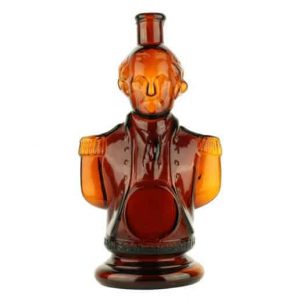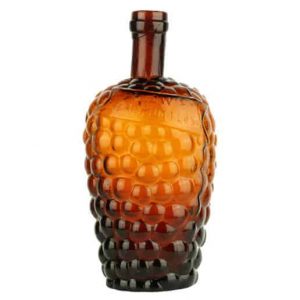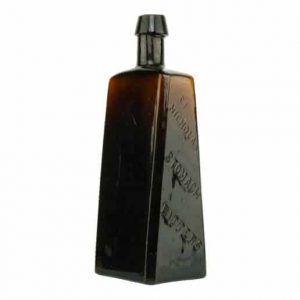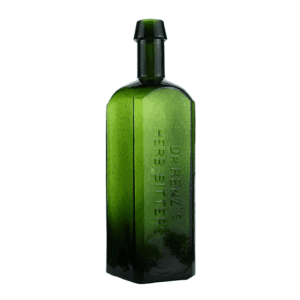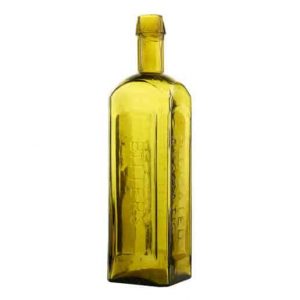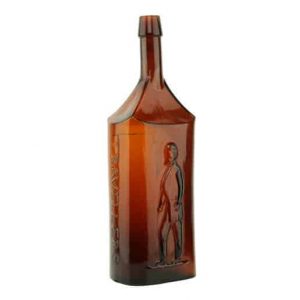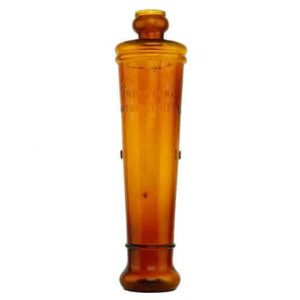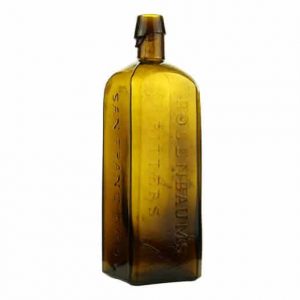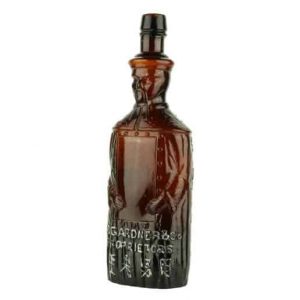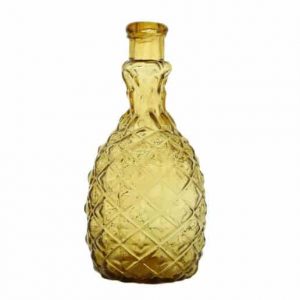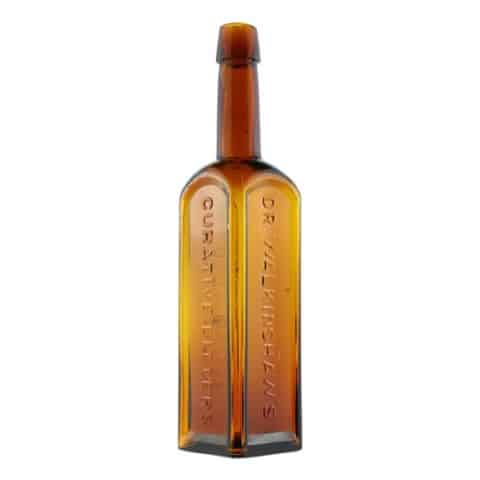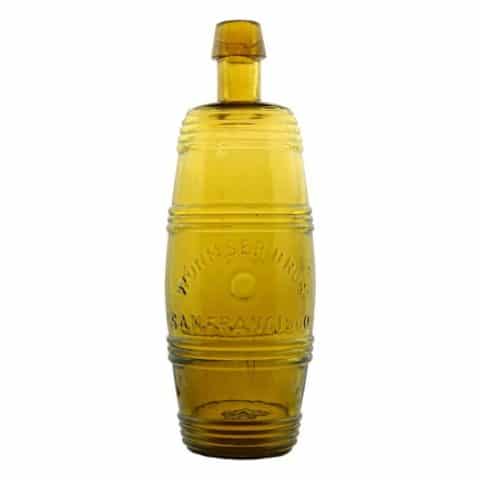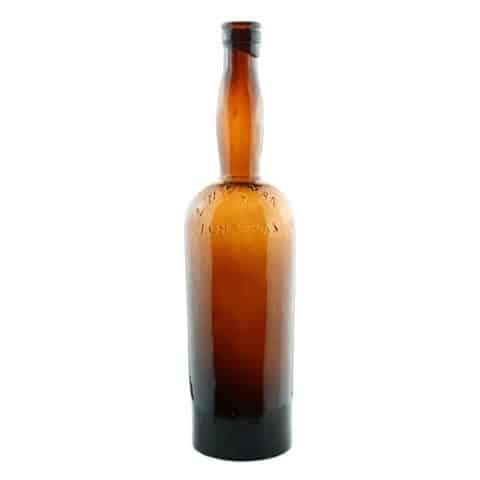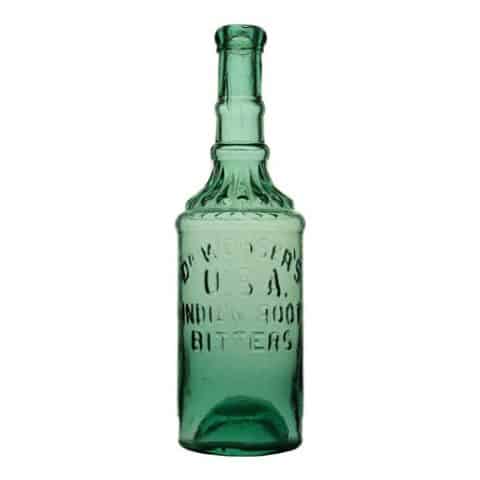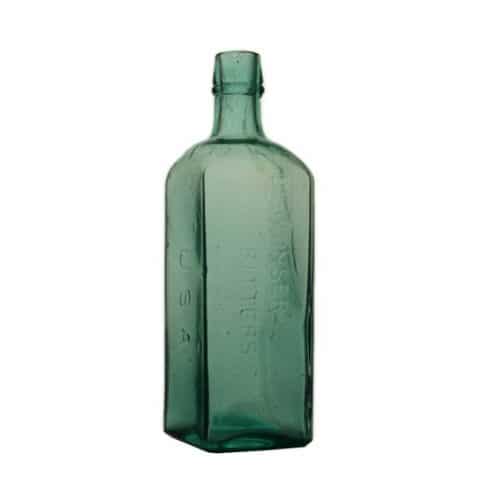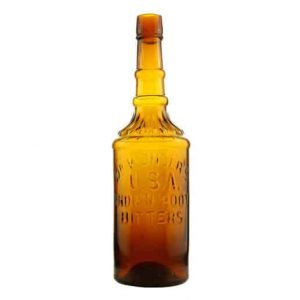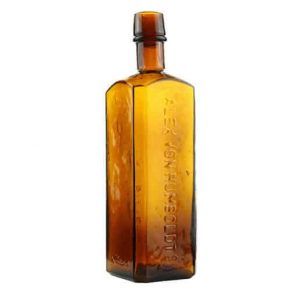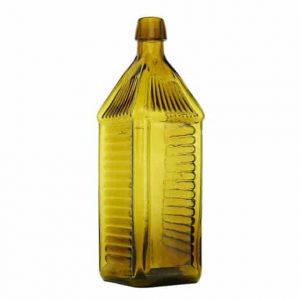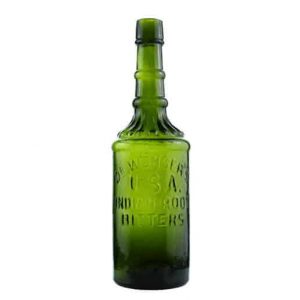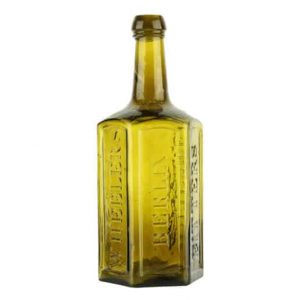big bill best bitters
Big Bill Best Bitters
Figural Decanter
B 94.5
Liebenthal Brothers & Company
Cleveland, Ohio
Melville & Sylvester Liebenthal
Amber Figural
Provenance: Ferdinand Meyer V Collection
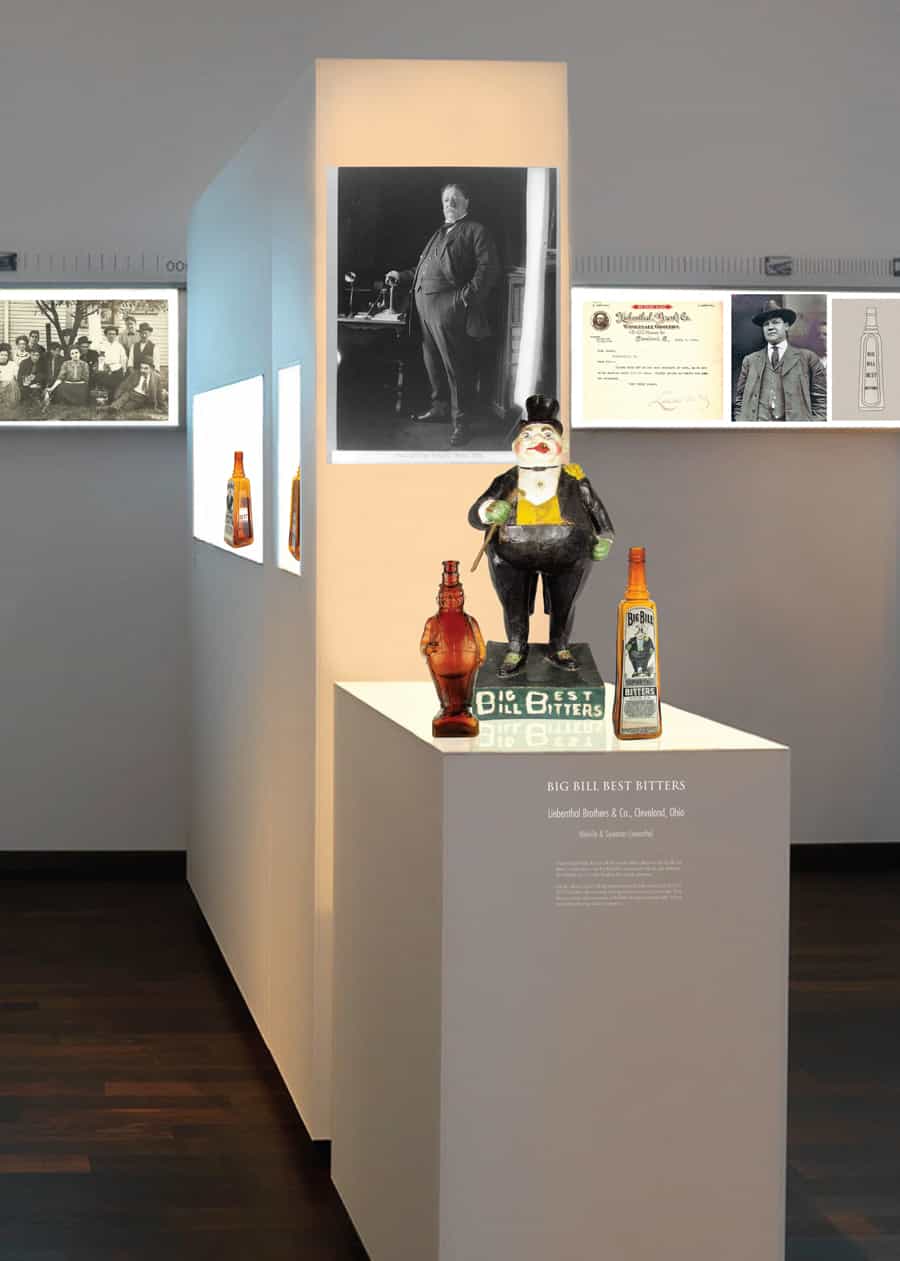
A favorite figural bottle that you will find in many bitters collections is the Big Bill Best Bitters. It is interesting to note that the bottle is not embossed with any copy whatsoever. The Liebenthal Bros & Co. from Cleveland, Ohio were the proprietors.
Typically, collectors start off with the tall tapered rectangle bottle embossed BIG BILL BEST BITTERS and follow with an example of the figural obese man in a top hat and tails. This is the same character that is represented on the label of the tapered rectangle bottle. Both are represented in the image below for comparison.

The figure is believed by most to be that of William Howard Taft who was the 27th president of the United States and the tenth Chief Justice of the United States, the only person to have held both offices.
If you look at the bottle backside, you will see a tree stump which is symbolic of a political stump speech which is what is used by a politician running for office. Typically a candidate who schedules many appearances prepares a short standardized stump speech that is repeated verbatim to each audience, before opening to questions. The term derives from the early American custom in which candidates campaigned from town to town and stood upon a sawed-off tree stump to deliver their speech.

The United State government passed a law called the Bottled-in-Bond Act which provided a label and verbiage for an American-made distilled beverage that had been aged and bottled according to a set of legal regulations contained in the United States government’s Standards of Identity for Distilled Spirits, as originally laid out in the Bottled-in-Bond Act of 1897.
The routine bottling of whiskey was such a good idea for ensuring that the product was what it claimed to be that in 1897 if the distiller followed a set of strict rules, including selling their whiskey in sealed bottles, the government would guarantee the authenticity of the bottle’s contents. It was the first-ever truth-in-labeling law.
Liebenthal Brothers & Co. of Cleveland, Ohio, offered blended whiskey for 10 dollars a case, plus a free sofa with every purchase.
Whiskey Magazine
As the 20th century dawned, makers and purveyors of alcoholic beverages came under increasing pressure from temperance forces. Some states enacted laws that prohibited all alcohol sales within their borders, but there was a large legal loophole. The post office was a federal enterprise, the states could not outlaw mail-order sales of liquor. This loophole was plugged by Congress, over President Taft’s veto, in 1913. Until then, competition in the mail-order whiskey business was fierce. As an example, the Liebenthal Brothers & Co. of Cleveland, Ohio, offered blended whiskey for 10 dollars a case, plus a free sofa with every purchase!
Liebenthal Brothers
Melville and Sylvester Liebenthal constituted the Liebenthal Brothers who were liquor merchants and grocers in Cleveland, Ohio from 1899 to 1919. The company used the brand names “Celrin” (Celery & Gin), “Donkey Rye,” “Jap Rye,” “St. Angeline,” “Lincoln Club, and “Lying Lady.”

Melville and Sylvester were the sons of Emanuel and Cordelia (Strauss) Liebenthal. Melville was educated in Cleveland public schools and married Minnette Sanger and had two children. Sylvester was educated at Brownell School and was married in Cleveland on October 14, 1907, to Maud Sloss. They had one son who was born on October 17, 1911. Sylvester first worked for Wm. Edwards Co. for ten years and started in business with his brother in 1899 as manager of Liebenthal Bros. Co. He was a member of the Elks, Chamber of Commerce, Municipal Association, and Excelsior Club. and was fond of equestrian exercises.
The Ring, Ham and Meyer listing in the draft Bitters Bottles Supplement 3 is as follows:
Decanter
B 94.5 Big Bill Best Bitters Decanter, Figural obese man in top hat and tails like that on a label of Big Bill Best Bitters.
11 ½ inches tall x 3-inch diameter at base
Amber
Larger plaster advertising countertop versions of the figural also exist with Big Bill Best Bitters marked on the base front.
See B 95 in Bitters Bottles.
The Carlyn Ring and W.C. Ham listing in Bitters Bottles is as follows:

B 95 BIG / BILL / BEST / BITTERS // f // BIG / BILL / BEST / BITTERS // f //
12 1/8 x 3 1/8 x 2 ¼ (8 ¾)
Tapered rectangle, Amber, LTCR, Tooled Lip,
Common Labels: Stomach or Magen Bitters contains harmless color and 21% alcohol by volume and is compounded with the extracts of the best herbs & roots known by the medical profession to be the most effective laxative remedy – A mild & healthful laxative. Guaranteed under the National Pure Food Law by Liebenthal Bros. & Co. U.S. Serial No. 2521.
These bitters do not only distinguish themselves by their flavor and aromatic odor above others generally used, but are at the same time an excellent tonic, stimulant, and appetizer, and possesses mild qualities which produce a mild and effective laxative.
The popularity and confidence which Big Bill Bitters have attained is evidence of its highly palatable qualities. The Greatest Favorite on the Market.
Primary Image: The figural Big Bill Best Bitters bottle imaged by the FOHBC Virtual Museum midwest studio by Alan DeMaison.
Support: Reference to Bitters Bottles by Carlyn Ring and W. C. Ham. Use of Bitters Bottles illustration courtesy of Bill Ham. Reference to Bitters Bottles Supplement 3 draft.
Support: Reference to an article by Wm. Floyd Dill of Bridgeton, New Jersey, “President Taft and Santa Claus Figural Bottles,” Antique Bottle & Glass Collector, July 1990. In this article, Mr. Dill provides some very convincing points as to why these figural bottles were actually blown to commemorate our 27th President, William Howard Taft.
Support: Reference to Whiskey Magazine, “A free sofa with every case” by Charles K Cowdery
Support: Reference to Big Bill Best Bitters on Peachridge Glass.
Support Image: Big Bill Best Bitters decanter – Jeff Wichmann, American Bottle Auctions.
Support Image: Auction Lot 104: Figural Bitters Type Bottle, America, 1870-1890. In the form of an obese man in top hat and tails sitting on a stump, medium amber with black, gray, white, and flesh-colored painted surface, tooled square collared mouth – smooth base, ht. 11 3/4 inches. Similar to the man on the label of R/H #B-95 The painted surface adds greatly to the appearance of the bottle. Fine condition. – Norman Heckler, Norman C. Heckler & Company
Support Image: Auction Lot 1119: Lincoln Club Beverage Bottle, late 19th/early 20th century, unopened, by Liebenthal Bros. & Co. of Cleveland, Ohio, ht. 11 1/2 in. – Skinner
Join the FOHBC: The Virtual Museum is a project of the Federation of Historical Bottle Collectors (FOHBC). To become a member.

